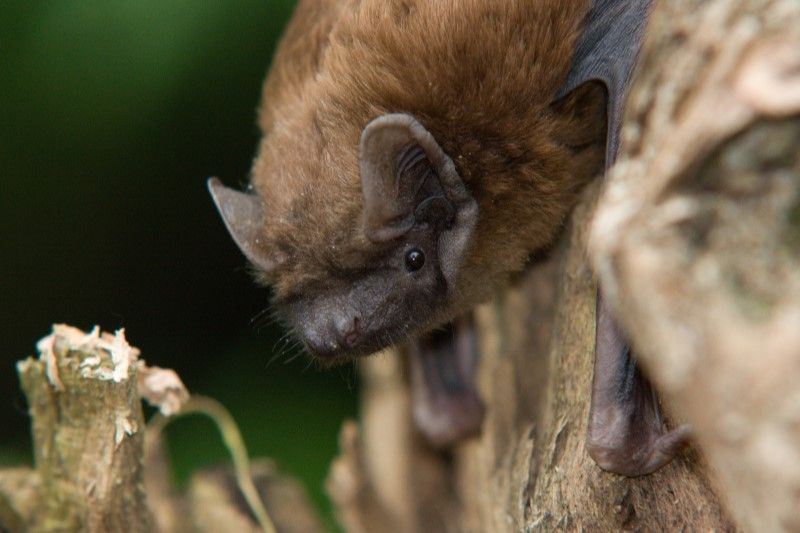Noctule bat

Status
Native and generally uncommon
Population
England: 565,000; 91,900 (Wales)
Scientific name
Nyctalus noctula
The noctule is the largest and highest-flying bat in Britain and it is usually the first to appear in the evening, sometimes before sunset. The adults have uniform, golden brown fur and short, dark brown ears, with a distinctive mushroom-shaped tragus. Their wings are narrow and pointed, and they have a characteristic powerful, direct flight, with repeated steep dives when chasing flying insects. They can sometimes be confused with swifts as they fly well above tree-top level. Individuals will make several foraging trips each night but may feed throughout the night on insects attracted to streetlights.
Wingspan: 32 – 40cm
Weight: 18 – 40g
Lifespan: Up to 12 years
Reproduction
In late summer, males establish a mating roost, usually in a tree hole, which they defend against other males. They attract females with a series of shrill calls and a strong odour, and will typically mate with four or five females. Females give birth to usually a single pup in small maternity roosts the following June or July. Mothers leave their young in crèches while they go off to feed. The young are weaned by six weeks.
Diet
Moths, beetles, flies, midges and winged ants.
Habitat
Generally woodland or pasture.
Summer roosts
Mainly old woodpecker holes or natural cavities in mature trees; sometimes found in buildings during the summer.
Winter roosts
Trees, cracks in rocks; sometimes in buildings.
Predators
Barn and tawny owls.
Threats
Loss of roost sites in hollow trunks and branches of old or dead trees through woodland management; and loss of foraging habitat such as permanent pasture and woodland edges/hedgerows.
Ultrasound
Noctules echolocate at low frequencies around 25kHz, just within the upper limit of human hearing, and they can sometimes be heard, particularly by children, without using a bat detector.
Status and conservation
GB Red List: Least Common (LC).
Population size and distribution
England: 565,000; 91,900 (Wales). The population has remained unchanged over the last 10 years. Noctule bats are widely distributed through England and Wales, up to southern Scotland, but are absent from Ireland.
Did you know?
Noctules may feed at any time in winter if conditions are suitable but can survive successfully without feeding for nearly four months and can tolerate temperatures well below freezing.
